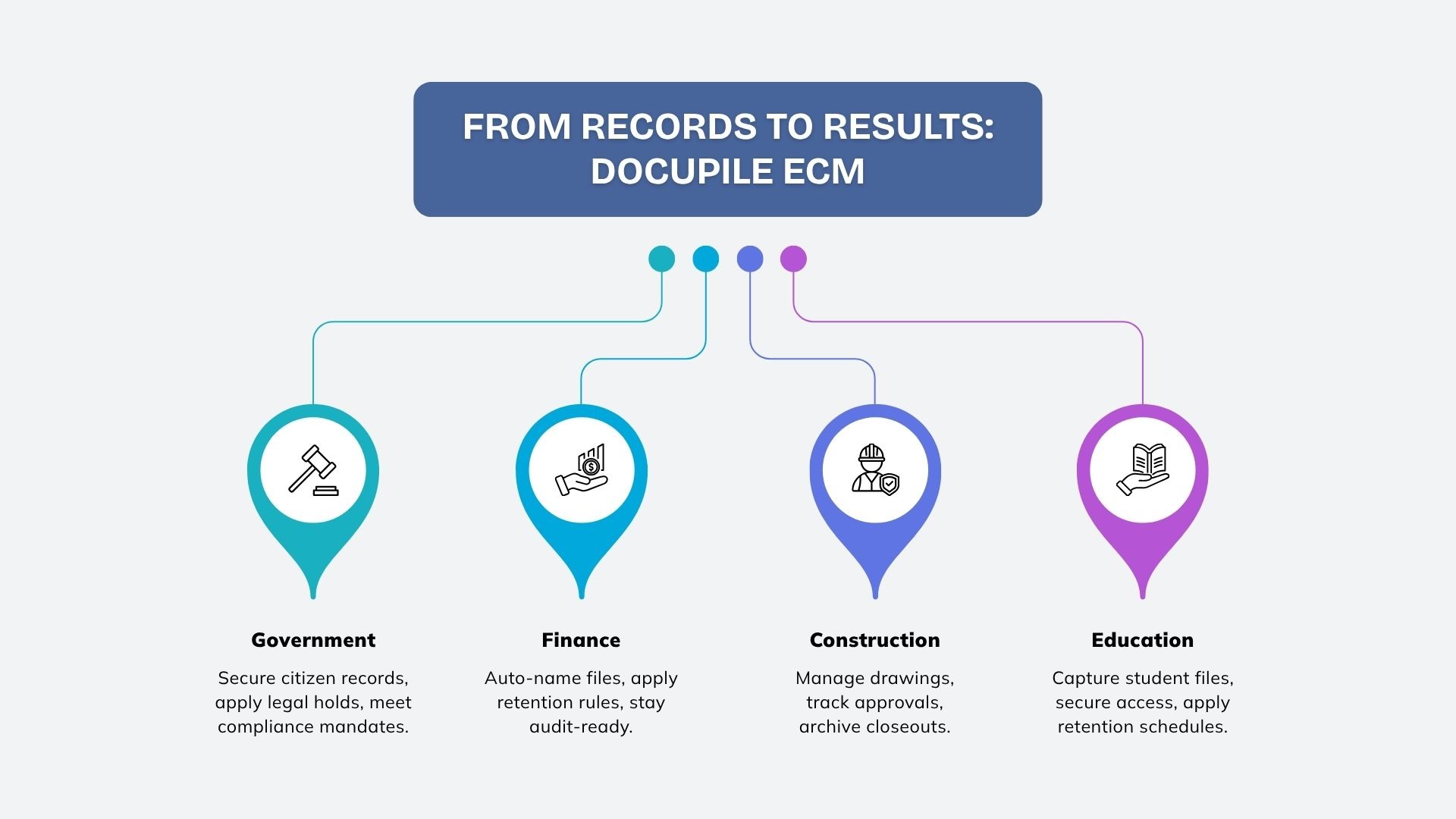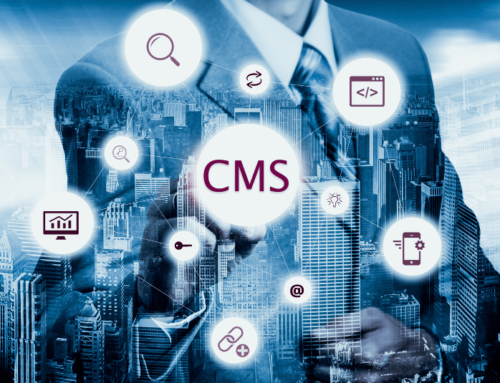Enterprise Content Management Systems
Enterprise Content Management (ECM) is more than just storing files—it’s about bringing structure, security, and scalability to every piece of content your organization handles. From emails and scanned forms to digital documents and multimedia.
It also manage all your content from the moment it’s created until it’s no longer needed. It keeps information consistent, easy to find, and compliant with regulations.
As organizations grow, information comes in from every direction—emails, forms, scanned papers, and digital files—and without structure, things quickly get messy. That’s where Enterprise Content Management Systems (ECM) comes in.
ECM systems like Docupile ensure that content is captured, organized, and governed from creation to disposal. As businesses grow and information flows from every direction, ECM transforms scattered data into a strategic asset.
Enterprise Content Management (ECM): A Complete Guide to Smarter Document Control
Scroll Down – For a Cool Infographic on ECM Systems
What is ECM & What Does it Do?

ECM stands for Enterprise Content Management. It refers to a set of strategies, tools, and processes used by organizations to manage, store, preserve, and deliver information and documents related to their operations. This can include a wide range of content types, such as documents, images, videos, emails, and more.
Here are some key components and aspects of the best Enterprise Content Management Systems:
ECM Process & Lifecycle: From Capture to Retention
This structured lifecycle brings discipline and reliability to how organizations manage their content.

1. Capture & Ingest
2. Classify & Index
3. Store & Secure
4. Search & Retrieve
5. Collaborate & Control
6. Automate Workflows
7. Govern, Retain & Dispose
Want to see this lifecycle in action?
Book a quick walkthrough of Docupile to explore how capture, collaboration, and governance work together.
Why Organizations Should Invest in Enterprise Content Management Systems?
ECM brings order to scattered information, turning content into a reliable asset instead of a burden.
Faster Retrieval and Fewer Interruptions
Consistent, Policy-Driven Filing
Lower Audit and Compliance Exposure
Controlled Collaboration and Fewer Version Conflicts
Predictable Approvals and Shorter Cycle Times
Secure Access for Distributed Teams
Lifecycle Discipline and Storage Control
Operational Visibility and Accountability
| Process | Before ECM | With Docupile ECM |
|---|---|---|
| Filing | Scattered, inconsistent | Standardized with auto rules |
| Access | Time-consuming | Quick, role-based retrieval |
| Search | Manual, error-prone | Full-text + metadata search |
| Collaboration | Lost versions | Controlled, trackable edits |
| Approvals | Bottlenecked | Automated with alerts |
| Compliance | High risk | Audit-ready, policy-based |
| End Of Life | Ad-hoc cleanup | Scheduled retention & disposal |
ECM vs DMS
Many organizations mistake Enterprise Content Management (ECM) for just another Document Management System (DMS).
While a DMS handles basic storage and retrieval, ECM goes further by governing the entire content lifecycle with compliance and security built in. For a deeper breakdown.
See our full article: ECM vs DMS.
ECM in Action: 4 Industry Examples
Goverment
Finance
Construction
Education
Curious how these use cases could apply to your organization?
Explore our “ECM in Action” guide or request a tailored demo of Docupile.
Buyer’s Checklist for ECM
Conclusion
Enterprise Content Management Systems provides a structured, compliant, and efficient way to manage content across its entire lifecycle.
Investing in ECM isn’t just a tech upgrade—it’s a shift toward smarter, more accountable content management. By moving beyond basic file storage and adopting ECM, organizations gain faster access to information, reduce audit risks, and strengthen collaboration.
With Docupile, teams gain faster access, stronger compliance, and streamlined workflows that reduce clutter and risk. Whether you’re managing citizen records, financial documents, or project files, Enterprise Content Management Systems brings clarity and control to your operations. Ready to see how it fits your organization?
Explore our demo or dive into real-world use cases to get started.




